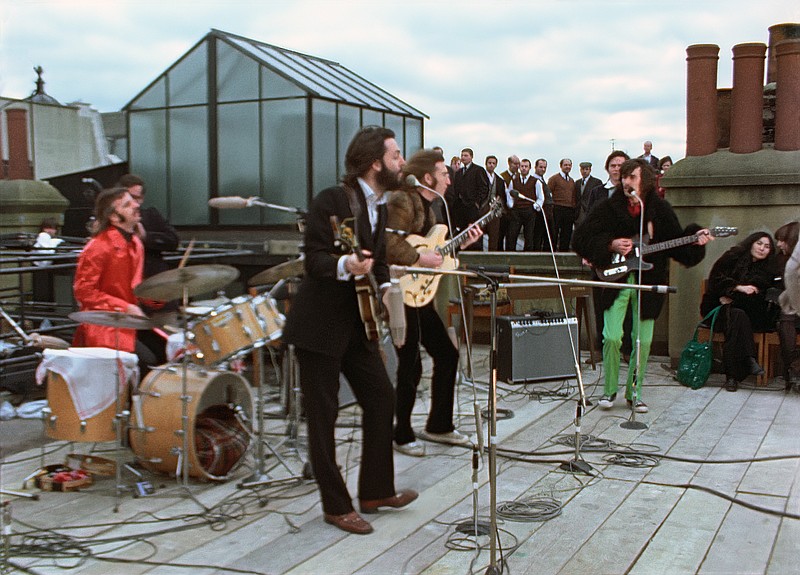NEW YORK -- For 50 years, the fixed narrative had the Beatles' "Let it Be" recording session as a miserable experience with a band where members were sick of each other, sick of their work and in the process of breaking up.
The nearly 8-hour, Peter Jackson-produced documentary culled from film and recording outtakes of those sessions instead reveal a self-aware band with a rare connection and work ethic that still knew how to have fun -- yet was also in the process of breaking up.
The "Get Back" series unspools over three days starting Thanksgiving on Disney+.
Produced by a Beatlemaniac for fellow Beatlemaniacs, it can be an exhausting experience for those not in the club. But the club is pretty big. Beyond the treats it offers fans, "Get Back" is a fly-on-the-wall look at the creative process of a band still popular a half-century after it ceased existence.
Jackson, the Academy Award-winning maker of the "Lord of the Rings" series, was discussing another project with the Beatles when he inquired about what happened to all the outtakes of director Michael Lindsay-Hogg's 1970 "Let it Be" film.
Nearly 60 hours of film taken over three weeks existed, mostly unseen, and the band had been considering what to do with it. Jackson took that material, as well as 150 hours of audio recordings, and spent four years building a story.
He approached with the fear that it might be a depressing slog.
Lindsay-Hogg's film is viewed as a chronicle of the band's demise -- unfairly, in Jackson's view -- because it was released shortly after the break-up was announced. Individual Beatles reinforced the notion with negative comments about the experience, where they had given themselves a tight deadline to write and record new material in preparation of a live show, with cameras following it all.
"I just waited for it to go bad," Jackson said. "I waited for the arguments to begin. I waited for the conflict to begin. I waited for the sense that they hated each other. I waited for all the things I had read in the books, and it never showed up."
Oh, there's conflict. History overshadows the enjoyable moments revealed in the outtakes, like John Lennon singing "Two of Us" as a Bob Dylan impersonator, or he and Paul McCartney challenging each other to a run-through without moving their lips. Jackson restores the balance.
"The connection was incredible," drummer Ringo Starr recalled in a recent Zoom interview. "I'm an only child (but) I had three brothers. And we looked out for each other. We looked after each other. We had a few rows with each other -- that's what people do. But musically, every time we would count in -- one, two, three, four -- we were into being the best we could be."
Jackson follows the sessions day-by-day from their start in a cavernous film set that was eventually abandoned in favor of their familiar London recording studio, to the brief rooftop performance that was the last time the Beatles played in public.
The filmmaker is sensitive to the idea that he was brought in to "sanitize" the sessions, pointing out that "Get Back" depicts George Harrison briefly leaving the band, an event Lindsay-Hogg was not permitted to show.
That moment unfolded after a morning where Harrison watched, silently stewing, as Lennon and McCartney displayed their tight creative connection working on "Two of Us" as if the others weren't there. When a lunch break came, Harrison had something more permanent in mind.
"I'm leaving the band now," he says, almost matter-of-factly, before walking out.
After a few days, and a couple of band meetings, Harrison was coaxed to return. The morning he does, the film shows he and Lennon reading a false newspaper report that they had come to blows, and faced off in boxing stances to mock it.
Along the way, Jackson's project dispels and reinforces pieces of conventional wisdom that has solidified through the years.
"The whole thing is full of mini-stories," Jackson said.
Jackson, who had been expected to make a conventional documentary, said he was nervous taking his much longer final product back to McCartney, Starr and the families of Lennon and Harrison.
"But they came back and said, 'great, don't change a thing,'" he said.

